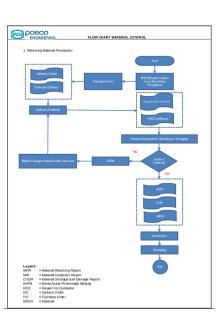ASM553 Flowchart BA232 Pairing Assignment PDF

| Title | ASM553 Flowchart BA232 Pairing Assignment |
|---|---|
| Course | administrative operation system |
| Institution | Universiti Teknologi MARA |
| Pages | 16 |
| File Size | 759.7 KB |
| File Type | |
| Total Downloads | 145 |
| Total Views | 405 |
Summary
FACULTY OF BUSINESS MANAGEMENTCAMPUS OF PUNCAK ALAMADMINISTRATIVE OPERATION SYSTEMS (ASM553)ASSIGNMENT 1 – FLOW CHART:CATALOGUING PROCESS (National Library of Malaysia)BA2323CPREPARED BY:SYAREEN HANIE BINTI SYABRANI LEONG 2021110723UMMI ZULAIKHA BINTI ZULKANAIN 2021110847PREPARED FOR:MADAM NOOR AZZA...
Description
FACULTY OF BUSINESS MANAGEMENT CAMPUS OF PUNCAK ALAM ADMINISTRATIVE OPERATION SYSTEMS (ASM553) ASSIGNMENT 1 – FLOW CHART: CATALOGUING PROCESS (National Library of Malaysia) BA2323C PREPARED BY:
SYAREEN HANIE BINTI SYABRANI LEONG
2021110723
UMMI ZULAIKHA BINTI ZULKANAIN
2021110847
PREPARED FOR: MADAM NOOR AZZAH BINTI SAID
DATE OF SUBMISSION: 20 DECEMBER 2021
TABLE OF CONTENT
No.
Content
1.
WORK FLOWCHART
2.
WORKFLOW OF SELECTED PROCESS
3.
PROPOSED WORKFLOW OF SELECTED PROCESS
4.
INPUT ELEMENT OF SELECTED FLOWCHART
5.
PROCESSING ELEMENT OF SELECTED FLOWCHART
6.
OUTPUT ELEMENT OF SELECTED FLOWCHART
7.
INPUT ELEMENT OF PROPOSED FLOWCHART
8.
REASONS OF THE PROPOSED FLOWCHART
9.
WORKFLOW PROCESS FACILITATE WORK EFFECTIVENESS
10.
WEAKNESS OF THE WORK PROCESS FLOW
11.
REFERENCES
STUDENTS RESEARCH FLOWCHART
SELECTED PROCESS WORKFLOW
PROPOSED OF SELECTED FLOWCHART
1.0 ANALYSE THE INPUT ELEMENT (SELECTED FLOWCHART) Under the process of the workflow chart above, there are two different departments responsible for the work process to start. ●
Acquisition Department The Acquisition Department is responsible for acquiring the material before passing it to the Documentation Department to start the progress of the workflow chart process. The department acquires the materials in various sources and goes through many different layers of step and process and ends the flow by passing the material towards the next responsible department.
●
Documentation Department After receiving the material from the Acquisition Department, the Documentation Department is responsible in cataloging the book through many different steps that are described on the workflow chart above. They are required to insert and extract information from material received before the material is finally available for the public.
Under the Documentation Department, there are two different people that are responsible for the cataloging process. ●
Cataloger The Cataloger is responsible for managing the catalog of materials at the library. She inputs data about the materials into an electronic catalog to ensure users can locate books, serials, films or other documents. She also prepares bibliographic and item records for monographs, journals and other library material.
●
Editor The editor under the Documentation Department is responsible in ensuring the information that the cataloger has inserted in the system, whether it is correct or requires some correction and update. After making sure that the information is correct, the Editor will publish the information for the user reference at the system, in OPAC (Online Public Access Catalog).
For the Cataloguing Process flow, there are a few pieces of equipment and software being used during and throughout the process. ●
Equipment: Computer, Barcode Scanner As the cataloging process is a work activity that provides information access to library materials, this process creates records digitally, thus the equipment being used during the process is none-other than a computer. The barcode scanner is used to scan the item ISBN barcodes whether to read, collect or insert information.
•
Software: Virtua Library Management System This is the system used during the process of cataloging. It is a web based, integrated solution that addresses the main library requirements. Through this system, the functions of the library are controlled digitally and in a systematic way.
2.0 ANALYSE THE PROCESSING ELEMENT (SELECTED FLOWCHART) The Cataloging Process starts when the Documentation Department receives the material from the Acquisition Department.
When the department first receives the
material, they will assign the type of record depending on the language of the material and bibliographic level. Then, the material will be categorized on tag fix field editors that suit the physical and type of material. After that, the cataloger will fill in the information of ISBN – International Standard Book Number and the cataloging source. The next step requires the cataloger to insert a language code tag if the material contains more than one language or if the material is a translated item. After the process of inserting and filling a few tags, they will insert the DDC (Dewey Decimal Classification) code based on the title of the item. The next tag is the Local Call Number tag, which will be inserted based on the DDC, author mark, and the location. The main entries tag will be inserted to show the correlation of the record and the person responsible. Afterwards, the cataloger will insert a few different tags such, title statement and edition statement.
Besides that, they will also insert tags based on the information on the publisher, place and year published, together with the year of copyright, if any, based on the information on the item. Then, the physical description tag will be inserted, which is descriptive information on physical items such, name, amount, and other physical material like illustration, dimension, and any accompanying material information. The catalogue will also include three different tags that are specifically based on the content, media, and carrier type. Relating to the format of the item. After inspecting the item, the cataloger will insert a note field tag to decide whether the item contains any important information. Next, they will be assigning subject access field tags while establishing a subject title that suits the LCSH (Library of Congress Subject Headings). The following steps are where the cataloger will insert added entry fields, electric location, and access, and alternated graphic representation tags. Catalogers need to ensure that the institution code tags are filled, following the item code which is PNM code; for collection of reference materials, and PNP code; for loan or lending collection. They also need to make sure that the specific tag is filled with the access number and the correct starting code depending on the predetermined stipulation.
Before patching the stripe code number (100xxxxxxx / 2000xxxxx /
3000xxxxxx) depending on the predetermined stipulation, the cataloger needs to note the call number on the item. Then, they will insert the item information and location in the library integration system before passing the task to the editor to do a check and edit any mistakes. After ensuring that all the tags needed are inserted and all the information required are cataloged, the editor will publish the item in OPAC for public use.
3.0 OUTPUT ELEMENTS OF THE WORK FLOWCHART
The process of cataloging enables a reliable search experience for users. This allows a person distant or remote from the library, to search for information without the help or assistance of a librarian. Only through the process can the library users know exactly the whereabouts of materials that meet their specific needs. Besides that, the cataloging process is a process that helps to serve as an inventory or bookkeeping of the library’s contents. They can easily access, collect or find an item. The outcome of the cataloging process allows the staff of the library to understand the item that they have, where to locate and store them, the status of the item, whether it is on display, in the storage, or on load, and together with the content of the item.
4.0 ANALYSE THE INPUT ELEMENT (PROPOSED FLOWCHART)
Under the workflow process, there are added staff responsible for the work process for the documentation process. As it is known, there are four catalogers who are responsible for their respective sections and tasks. They are still in the same department and position, but the only difference is the tasks given that are divided into four different processes for them to remain focused and make it easier to do each process better. They consist of Cataloger 1, Cataloger 2, Cataloger 3 and Cataloger 4. They still do the same process as presented in the selected flowchart but in this proposed flowchart they are divided into four sections of process that hold different responsibilities. Besides that, the editor remains as one and responsible for the editing process that needs to alert and make sure the user has the inserted information in the system correctly, then publish the information for the user reference.
5.0 REASON FOR THE PROPOSED OF THE FLOWCHART In general, we have prepared a proposed flowchart to improve the existing process system used by the company. As clearly referring to our proposed flowchart, there are additions made that are with the addition of employees where previously the cataloger is one person but is added to four people who are responsible for different tasks from the same position and department. The reason why we proposed the new flowchart is to lighten the workload of one person as based on the selected flowchart, the officer responsible for the step is only two people which are cataloger and editor. The main objective is to make it easier for a cataloger to stay focused with her field of work which is not too much compared to the previous one. If seen, the selected workflow only has one cataloger who manages overload responsibilities from beginning to the end. Consequently, it will burden the cataloger with a heavy task to bear alone. Besides that, we do not really change the existing flowchart because we believe it is very effective and easy to understand by everyone about all the processes. However, we added other catalogers to be divided into four different tasks so that the catalogers will not feel stress or burnout when having to do a lot of processes alone. Therefore, it is very important to ensure that each employee is always able to do the tasks without having to feel stress and that is why the purpose of our proposed flowchart is for them to carry out tasks better.
6.0 WORKFLOW PROCESS FACILITATE WORK EFFECTIVENESS Based on our evaluation, the workflow process of cataloging in the organization is effective, as it is not complicated and straightforward. The catalogers are responsible for each step before they finally pass the task to the editor. The process flow also describes that the person in charge’s task is a one-person task, hence they do not need to reach out for others to complete their work or task. It is also an easy workflow to understand and adapt. New workers or newcomers can easily understand, process, and start the workflow.
7.0 WEAKNESS IN WORK PROCESS CHART
Based on the workflow chart that we have analyzed, there was not much weakness that can be found or detected as the flowchart has been increasing the efficiency of the workflow. However, in our perspective and opinion, the flow chart's weakness is that the total or individual responsible for most of the step is one person's workload. In our opinion the workflow chart of a few steps can be divided in a few people before they finally pass it to the editor. If not, everyone of a cataloger may or will feel burned out and burdened with the total steps of their workload.
REFERENCES
Nadia Nur Amalina. (2021, 31 October). Assistant Director. Cataloguing Department of National Library of Malaysia. Personal interview [Personal Interview]. Gaskin, J. (2021, 12 October). 7 Types of Flowcharts and How to Choose the Right One. Vennage. https://venngage.com/blog/types-of-flowcharts/ Kabiru Danladi Garba. A Study of the Circulation Module of Virtua Library Software in Bayero University Kano. Skyline University Nigeria. January 2016 (PDF) A STUDY OF THE CIRCULATION MODULE OF VIRTUA LIBRARY SOFTWARE IN BAYERO UNIVERSITY KANO (Accessed November 1, 2021) PK.PPAS (O) 04” June 2017.http://www.ppas.gov.my/dokumen/iso/operasi/ 9001-2015/PK_PPAS(O)04%20-%20pengkatalogan.pdf (Accessed November 2021) “Prosedur Pengkatalogan, Pengklasan dan Penghantaran Bahan Perpustakaan "Value of Cataloging Librarians", American Library Association, July 25, 2007. http://www.ala.org/alcts/resources/org/cat/catlibvalue (Accessed November 1, 2021)...
Similar Free PDFs

Flowchart Assignment
- 6 Pages
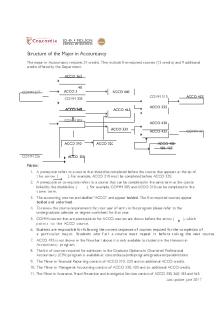
Flowchart-acco - flowchart
- 1 Pages

Flowchart
- 8 Pages
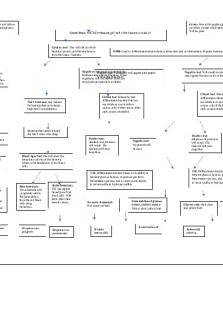
Flowchart
- 1 Pages

Negligence Flowchart
- 3 Pages

Bab02 Flowchart
- 7 Pages
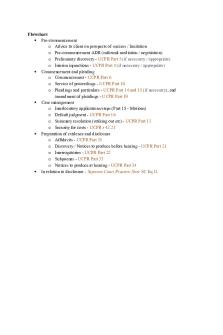
civil Flowchart
- 2 Pages
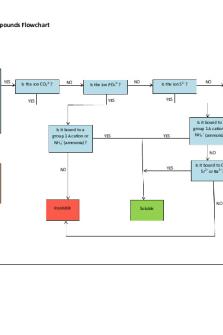
Solubility Flowchart
- 2 Pages

Flowchart Jurnal
- 13 Pages
Popular Institutions
- Tinajero National High School - Annex
- Politeknik Caltex Riau
- Yokohama City University
- SGT University
- University of Al-Qadisiyah
- Divine Word College of Vigan
- Techniek College Rotterdam
- Universidade de Santiago
- Universiti Teknologi MARA Cawangan Johor Kampus Pasir Gudang
- Poltekkes Kemenkes Yogyakarta
- Baguio City National High School
- Colegio san marcos
- preparatoria uno
- Centro de Bachillerato Tecnológico Industrial y de Servicios No. 107
- Dalian Maritime University
- Quang Trung Secondary School
- Colegio Tecnológico en Informática
- Corporación Regional de Educación Superior
- Grupo CEDVA
- Dar Al Uloom University
- Centro de Estudios Preuniversitarios de la Universidad Nacional de Ingeniería
- 上智大学
- Aakash International School, Nuna Majara
- San Felipe Neri Catholic School
- Kang Chiao International School - New Taipei City
- Misamis Occidental National High School
- Institución Educativa Escuela Normal Juan Ladrilleros
- Kolehiyo ng Pantukan
- Batanes State College
- Instituto Continental
- Sekolah Menengah Kejuruan Kesehatan Kaltara (Tarakan)
- Colegio de La Inmaculada Concepcion - Cebu



